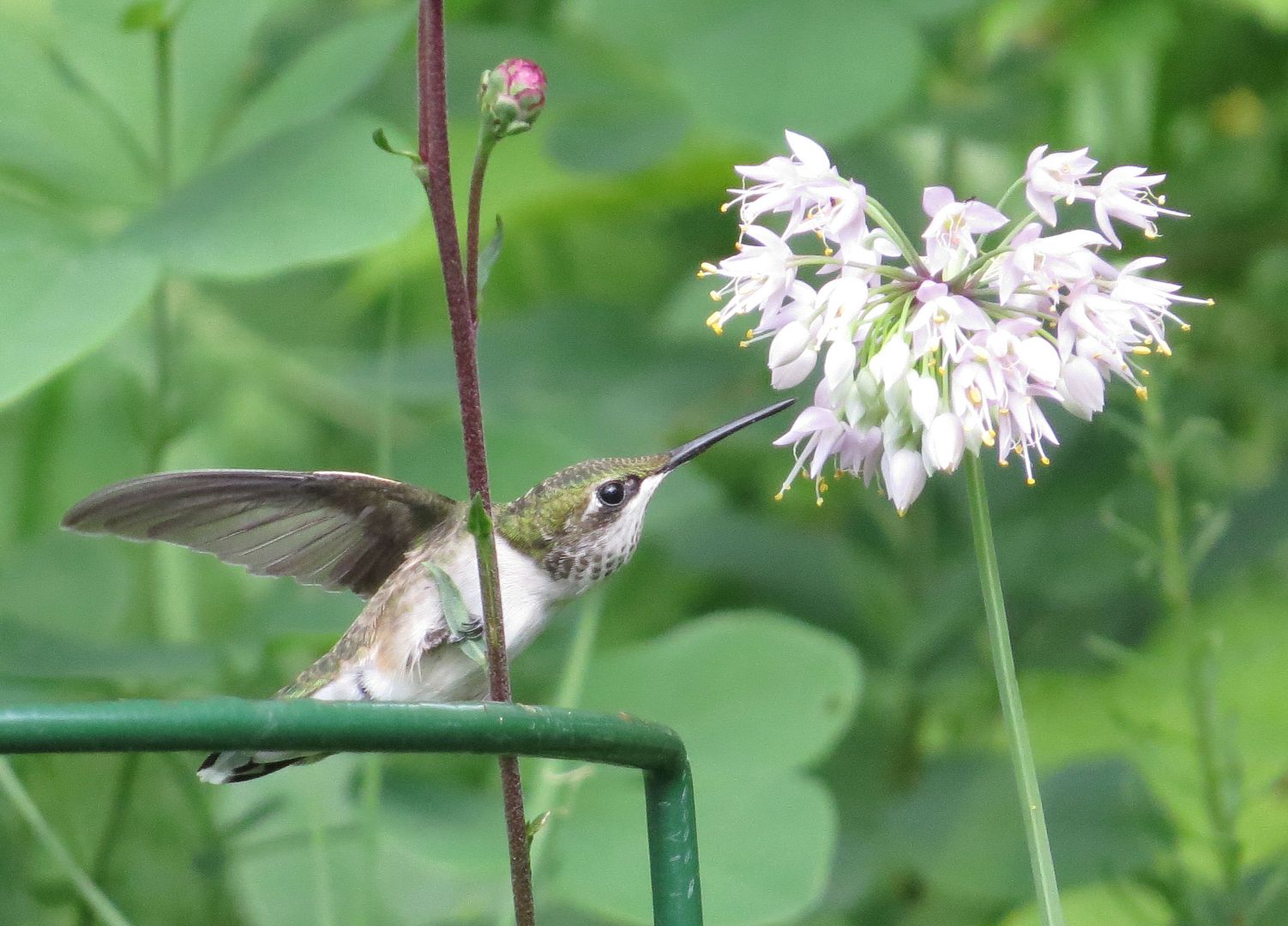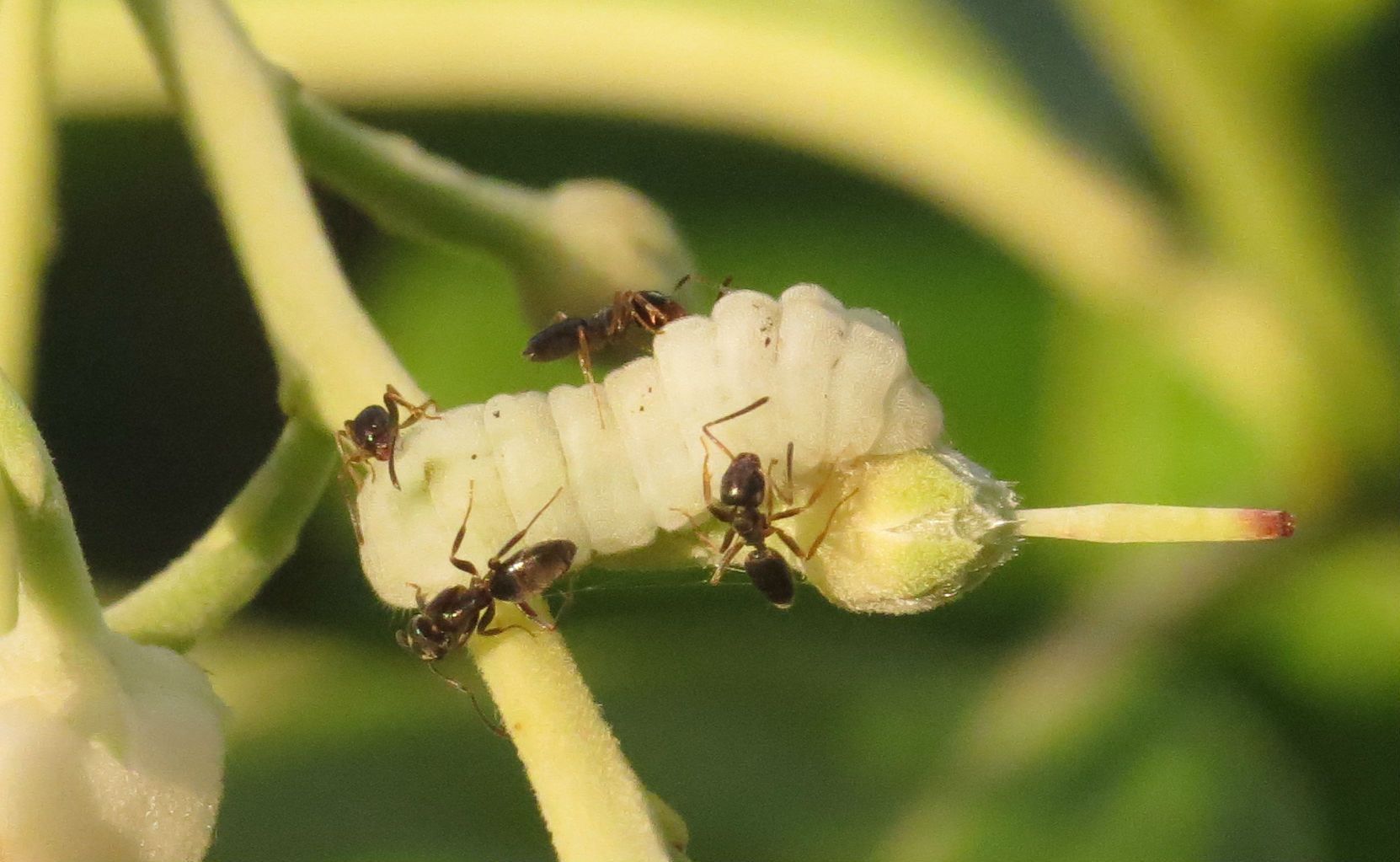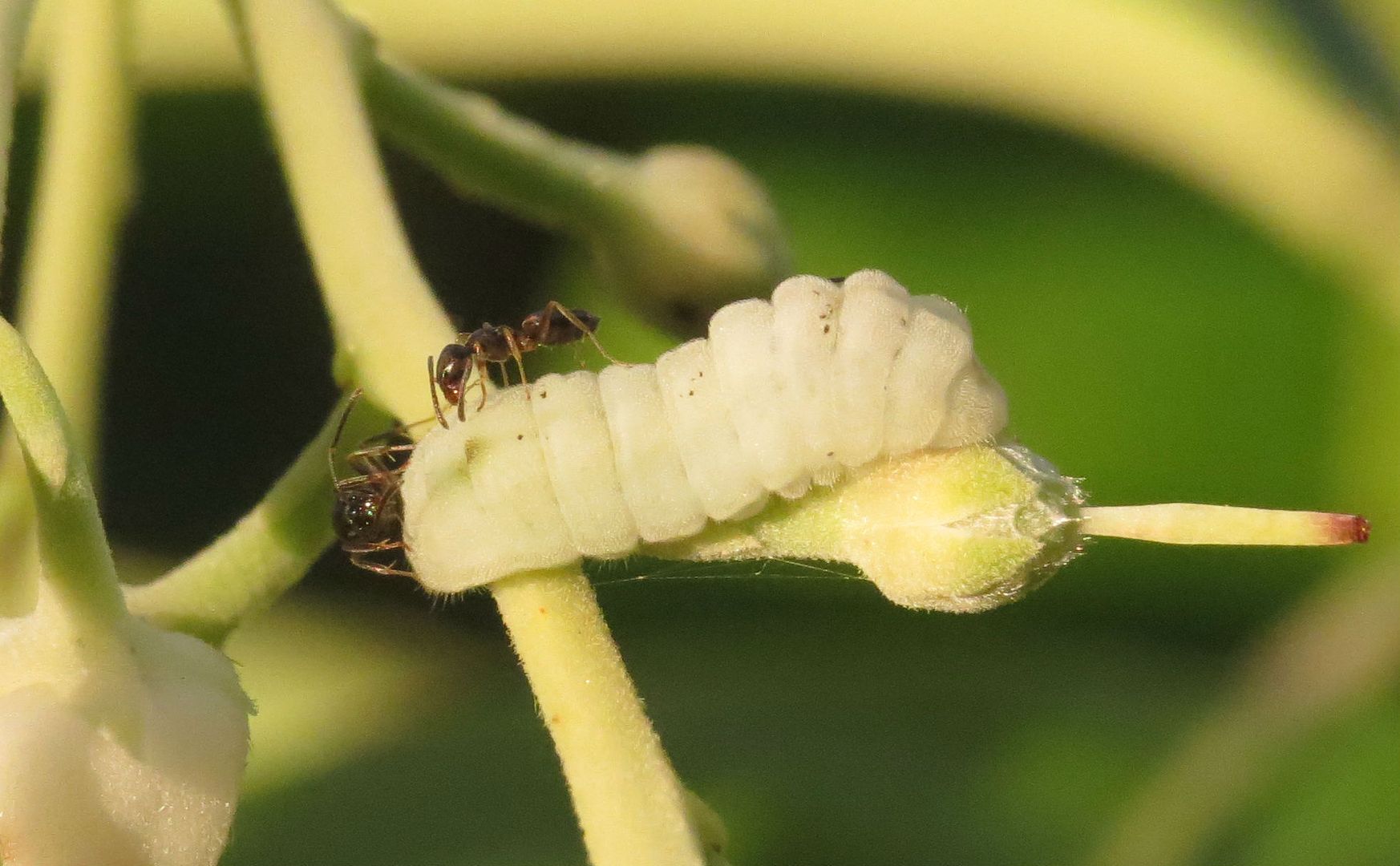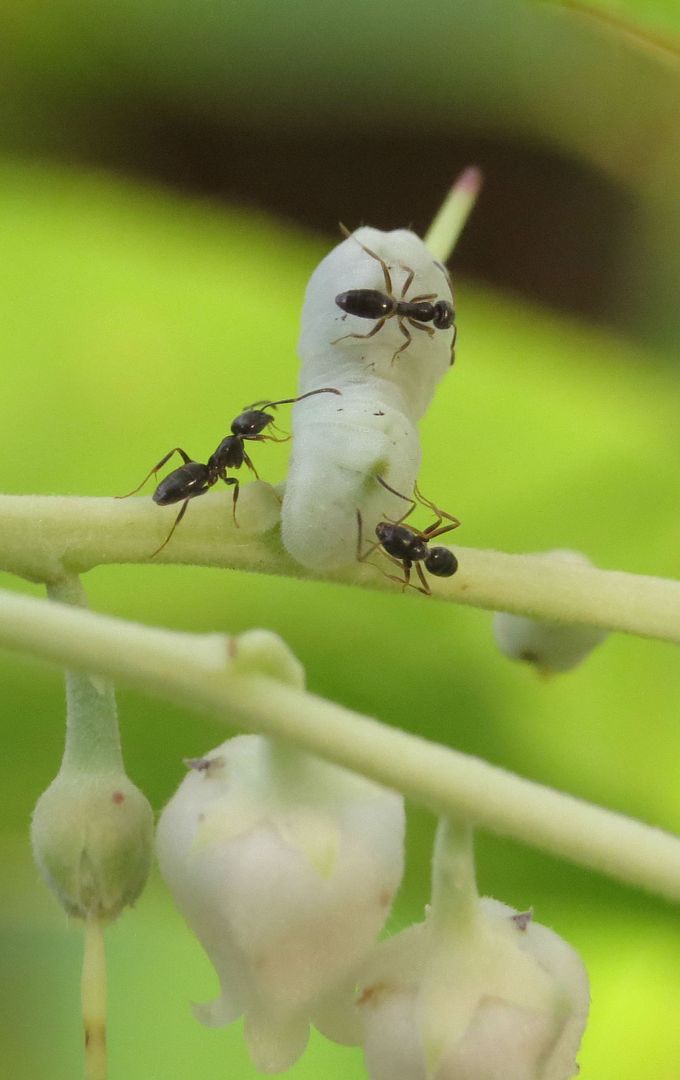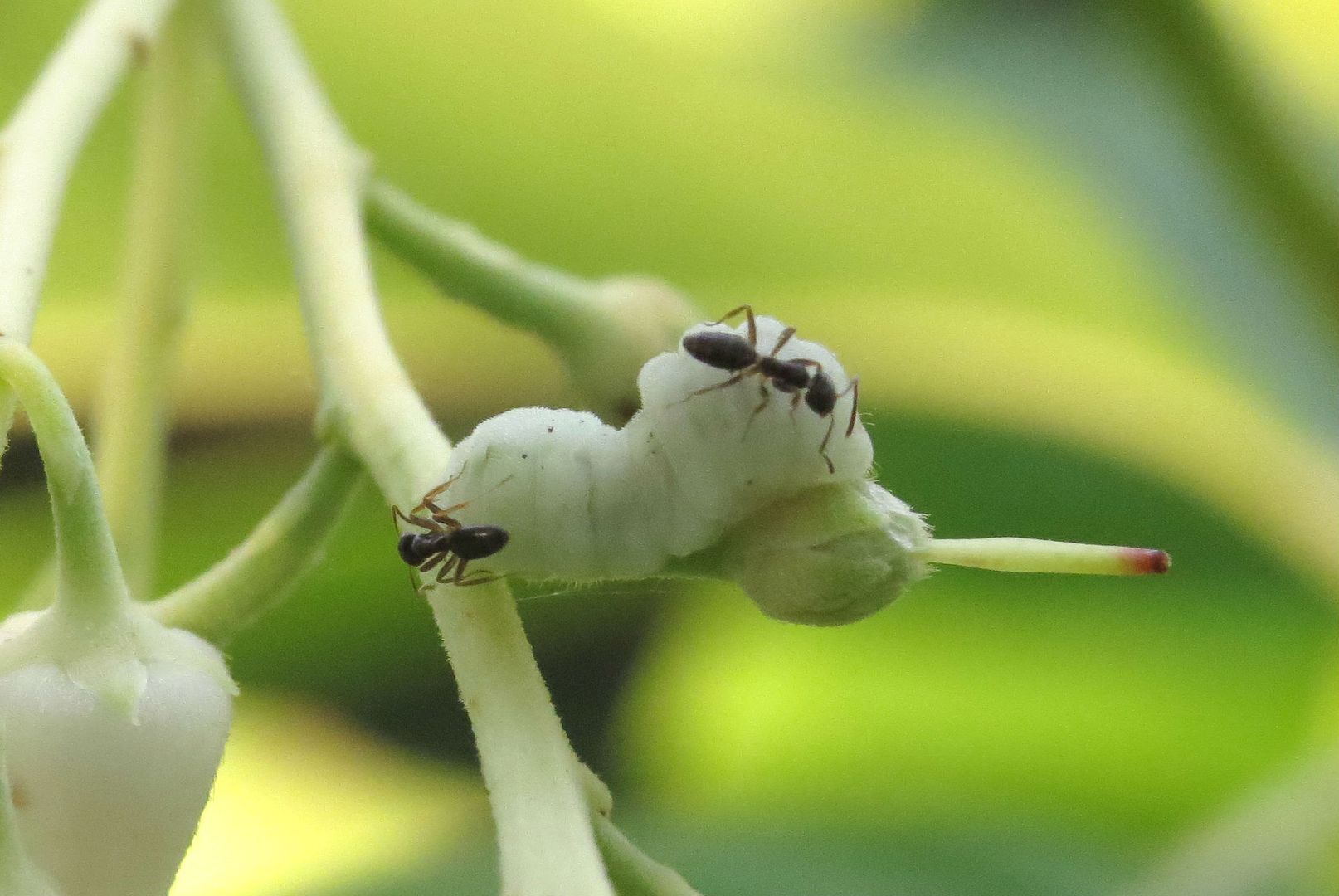Saturday, July 25, 2015
Hummingbird on Nodding Onion
I never really thought of Nodding Onion, Allium cernuum, as a Hummingbird plant until today. I have seen it listed in magazines from time to time as such but the Ruby-Throats that visit my garden always seem to go for the Iron Weed, Coral Honeysuckle, Button Bush, and Joe Pye Weed over these.
The nodding onion patch is situated in a small sand dune I installed in my yard. My home sits on almost 100% clay so adding patches dense with sand allows me to grow a wider variety of plants. They've flowered for the past two years now and do decent with getting bee attention, bumblebees mostly. The patch of Mountain Mint in an adjacent flower bed steals all the attention though.
She (I think from the lack of iridescent feathers on the throat) was out there a good while visiting every last flower on the 30 or so onions I have flowering at the moment.
It got to the point where she had to take a break but that didn't stop her from continuing to feed.
Monday, July 13, 2015
Caterpillar on Sourwood Tree with Ants
It's always exciting when Ants, Bees, Butterflies, and Nature can all come together. This is the former long winded title of this blog, which I've since changed to Biodiverse Gardens.
So two years ago I planted a Sourwood tree as a nectar plant for my Honeybees. They've yet to find it this year but really it's still just a sapling barely 6' tall. This is one of the prized nectar flows among beekeepers because it produced great tasting honey. Unfortunately it's a rather uncommon landscaping tree in my area and doesn't occur in wild forests here, so for the most part my planting this tree is like adding a drop in the bucket to my overall honey harvest. Still though I'd rather plant a world class honey tree over the more commonly sold plants offered at local garden centers.
Earlier today I discovered what looks like one of the Blues or Azure Caterpillars feeding on the flowers. This is odd for a few reasons: I live in New Jersey and Sourwoods don't grow here wildly, so it's unlikely to see this kind of relationship so far outside of the tree's native range.
I have heard of Zebra Swallowtails finding groves of Paw Paws here in NJ so maybe something similar has happened, but more likely one of the species that was already here has made the jump to a new host plant, or is using one that they would normally use when they occur farther south.
Also odd, is that no one seems to have ever reported this type of caterpillar on Sourwoods before. Or maybe I'm just not looking hard enough but all the listings for Sourwood in "Caterpillars of Eastern North America" don't look correct for this species.
Another bit of intrigue, prior to the caterpillars showing up, the ants, Tapinoma sessile, were stealing the nectar from the flowers. But now that the caterpillars (there's just 2 of them that I counted,) have shown up and started eating the flowers, the ants have changed their behavior. Now instead of stealing from the flowers they're tending the caterpillars which are eating the flowers.
This probably doesn't benefit the tree at all. Flowers that have been nectar robbed can still produce seed, whereas flowers that have been eaten won't develop into anything. The only benefit as far as I can tell is that the ants have stopped nectar robbing the whole tree and are now just going to the section where the caterpillars are found. So sacrificing a few flowers might benefit the tree overall.
When I started my native plant garden, this was one of the behaviors I'd hoped to attract into my yard. Ideally I pictured it happening in a field of Wild Lupins saving an endangered species of Blue but this also works. What eventually happens is the caterpillar drops to the ground and is taken into an ant nest where it then pupates... some species change their diet to eating the ant brood before pupating but the ants don't care at that point. These sorts of caterpillars, along with producing nectar and being treated like cattle, also make noises that mimic the sounds a queen ant makes when she wants to be tended. Ants themselves are also more than happy to eat their own eggs or feed their eggs to developing brood more worthy of the nutrients so this isn't unant-like behavior. They're safe in the nest until the following spring, when they must emerge a butterfly and quickly get out of the next to spread their wings.
So two years ago I planted a Sourwood tree as a nectar plant for my Honeybees. They've yet to find it this year but really it's still just a sapling barely 6' tall. This is one of the prized nectar flows among beekeepers because it produced great tasting honey. Unfortunately it's a rather uncommon landscaping tree in my area and doesn't occur in wild forests here, so for the most part my planting this tree is like adding a drop in the bucket to my overall honey harvest. Still though I'd rather plant a world class honey tree over the more commonly sold plants offered at local garden centers.
Earlier today I discovered what looks like one of the Blues or Azure Caterpillars feeding on the flowers. This is odd for a few reasons: I live in New Jersey and Sourwoods don't grow here wildly, so it's unlikely to see this kind of relationship so far outside of the tree's native range.
I have heard of Zebra Swallowtails finding groves of Paw Paws here in NJ so maybe something similar has happened, but more likely one of the species that was already here has made the jump to a new host plant, or is using one that they would normally use when they occur farther south.
Also odd, is that no one seems to have ever reported this type of caterpillar on Sourwoods before. Or maybe I'm just not looking hard enough but all the listings for Sourwood in "Caterpillars of Eastern North America" don't look correct for this species.
Another bit of intrigue, prior to the caterpillars showing up, the ants, Tapinoma sessile, were stealing the nectar from the flowers. But now that the caterpillars (there's just 2 of them that I counted,) have shown up and started eating the flowers, the ants have changed their behavior. Now instead of stealing from the flowers they're tending the caterpillars which are eating the flowers.
This probably doesn't benefit the tree at all. Flowers that have been nectar robbed can still produce seed, whereas flowers that have been eaten won't develop into anything. The only benefit as far as I can tell is that the ants have stopped nectar robbing the whole tree and are now just going to the section where the caterpillars are found. So sacrificing a few flowers might benefit the tree overall.
When I started my native plant garden, this was one of the behaviors I'd hoped to attract into my yard. Ideally I pictured it happening in a field of Wild Lupins saving an endangered species of Blue but this also works. What eventually happens is the caterpillar drops to the ground and is taken into an ant nest where it then pupates... some species change their diet to eating the ant brood before pupating but the ants don't care at that point. These sorts of caterpillars, along with producing nectar and being treated like cattle, also make noises that mimic the sounds a queen ant makes when she wants to be tended. Ants themselves are also more than happy to eat their own eggs or feed their eggs to developing brood more worthy of the nutrients so this isn't unant-like behavior. They're safe in the nest until the following spring, when they must emerge a butterfly and quickly get out of the next to spread their wings.
Sunday, July 5, 2015
Friday, July 3, 2015
The 4th Annual New Jersey Ant Together!
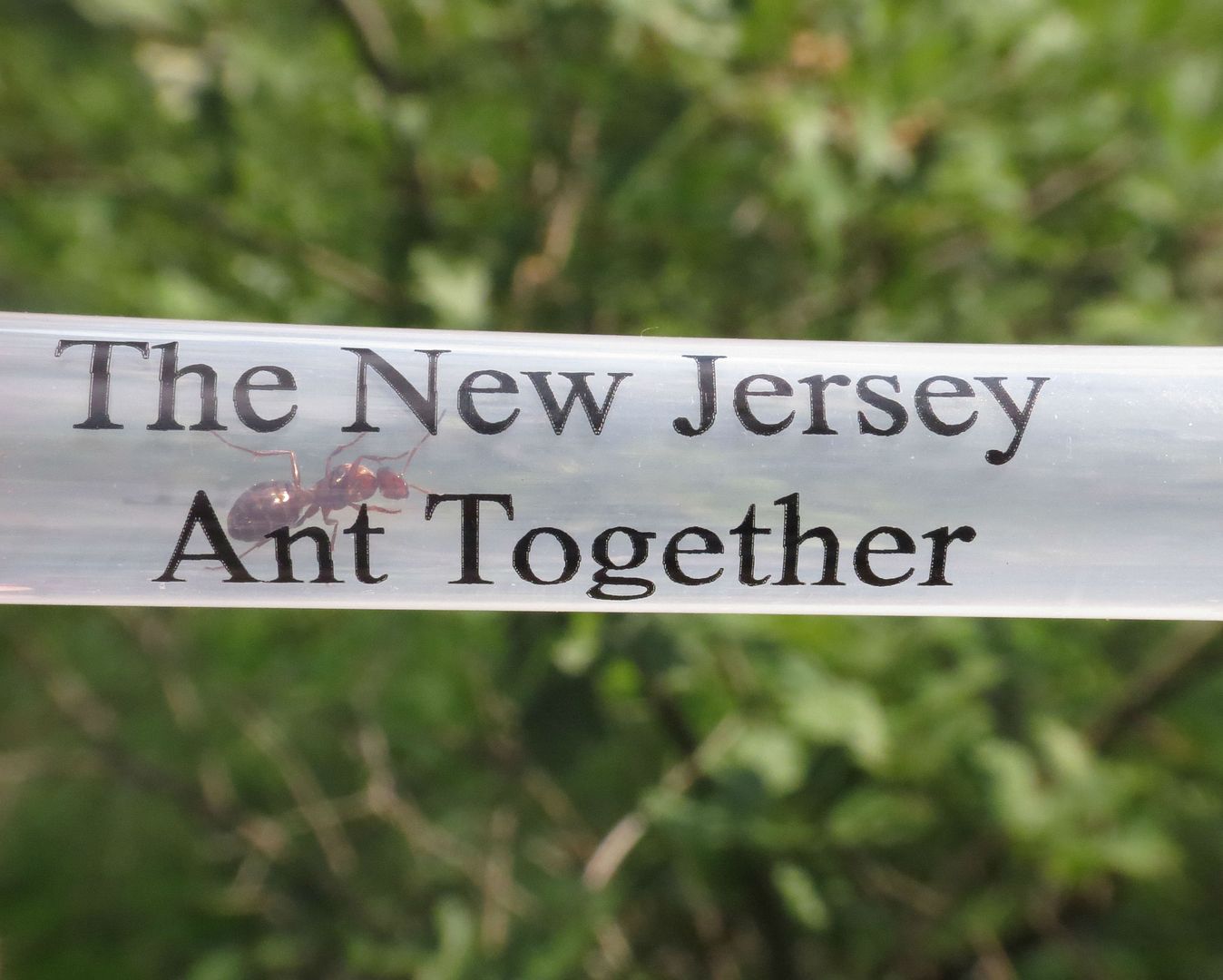
For the even I bought some specially labeled tubes which I intend to hand out at these events. The idea being to put queen ants in them to get what I refer to as the "money shot" and try to sell the event and get more interest. I can use this as the banner image for future Ant Togethers.... but dammit if I'm not the worst ant keeper in the whole god dam world. Later on we're in the parking lot and of all the test tubes to fall out of my bag.... I ran her ass over!
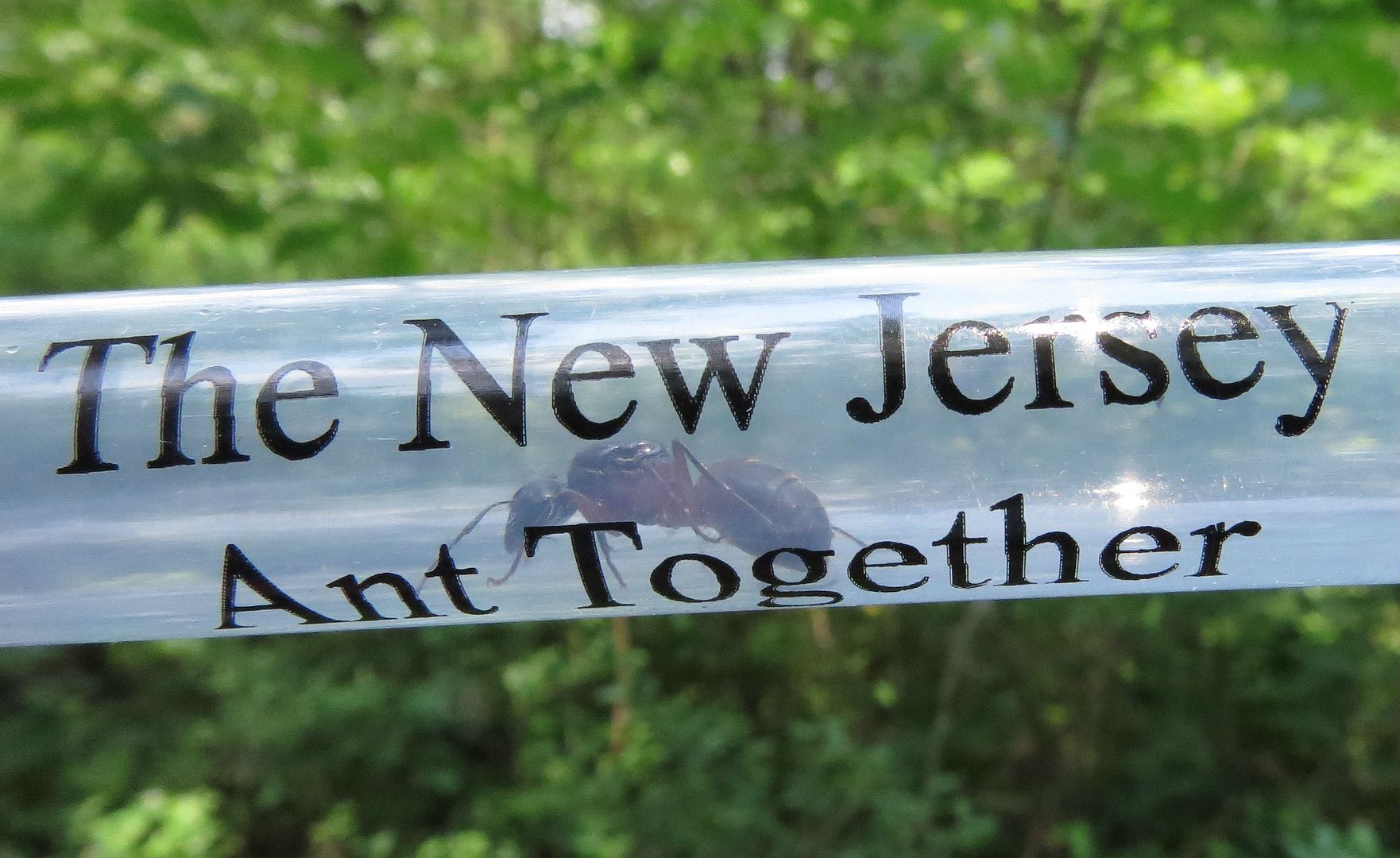
This one made it to the car!

Camponotus chromaiodes. (Same ant as seen above) This is typically the dominant Camponotus species in the forests here.
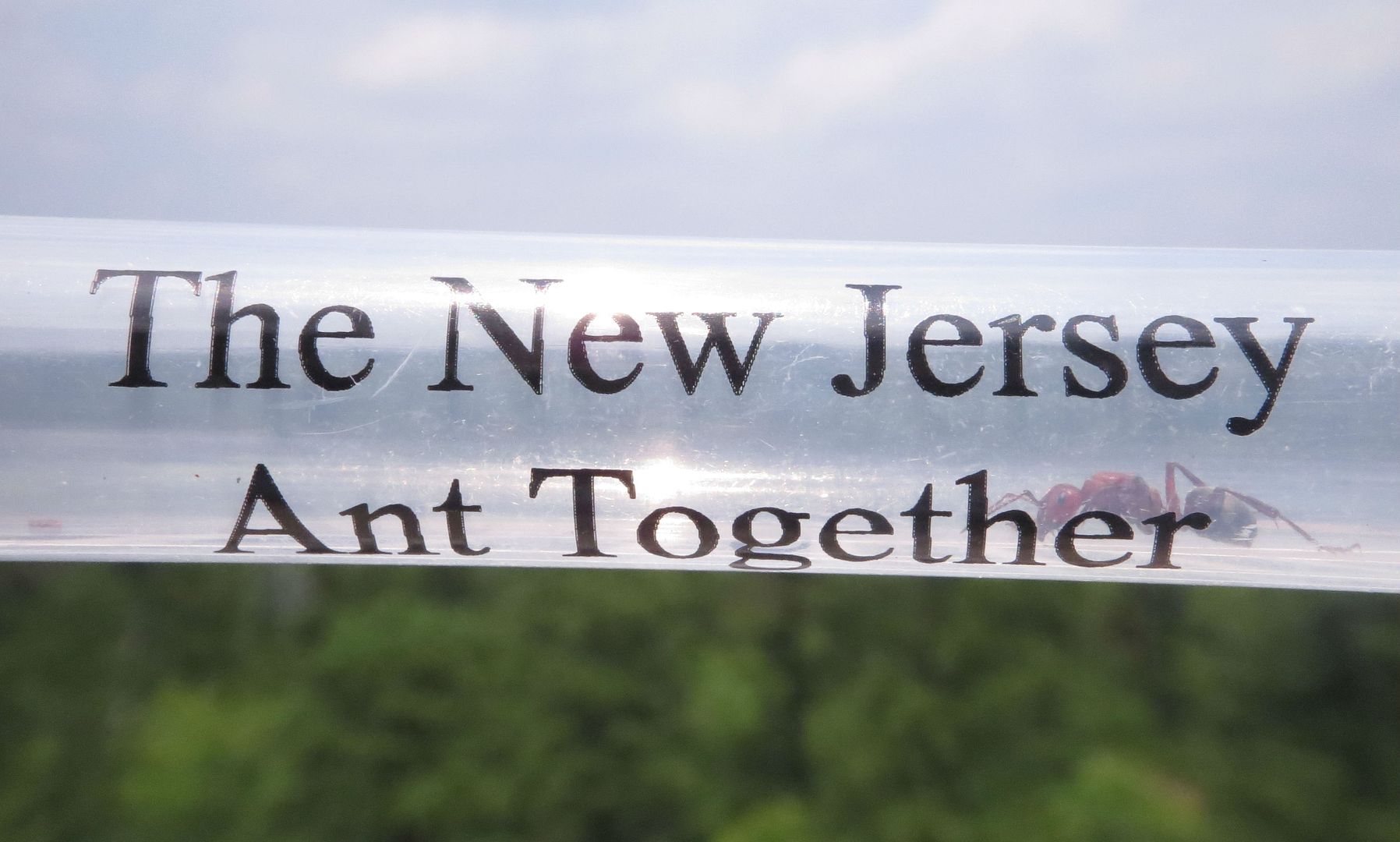
We also found a parasitic Formica wondering which I still need to ID. We actually didn't find any colonies of this at that location so it might be one of the more exclusive slave making kind such as F. pergandei. (Their colonies always require host Formica and never grow beyond what they can capture.)

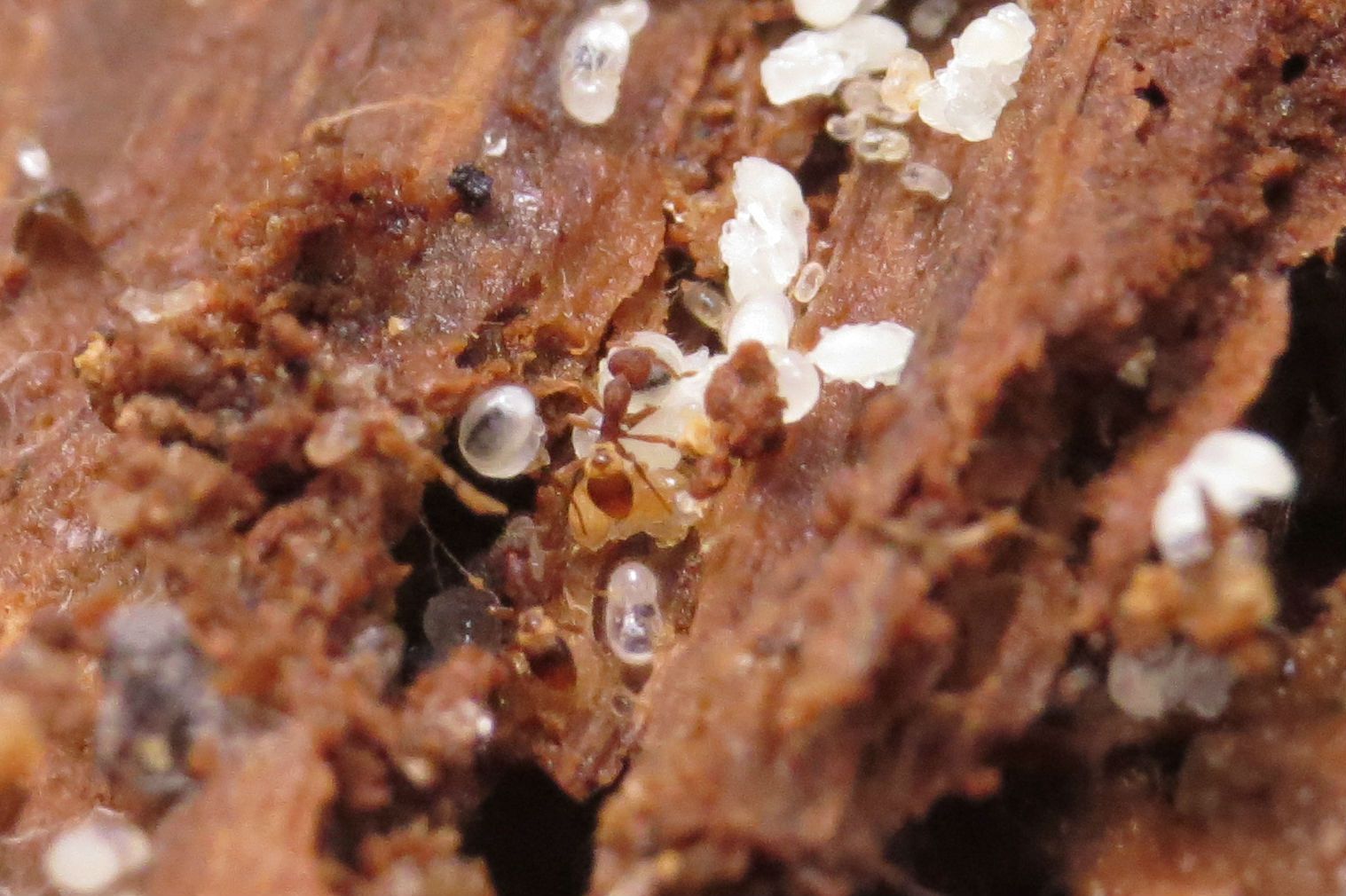
Finding a colony of Pyramica was something of a highlight because it's not commonly found in suburban habitats.
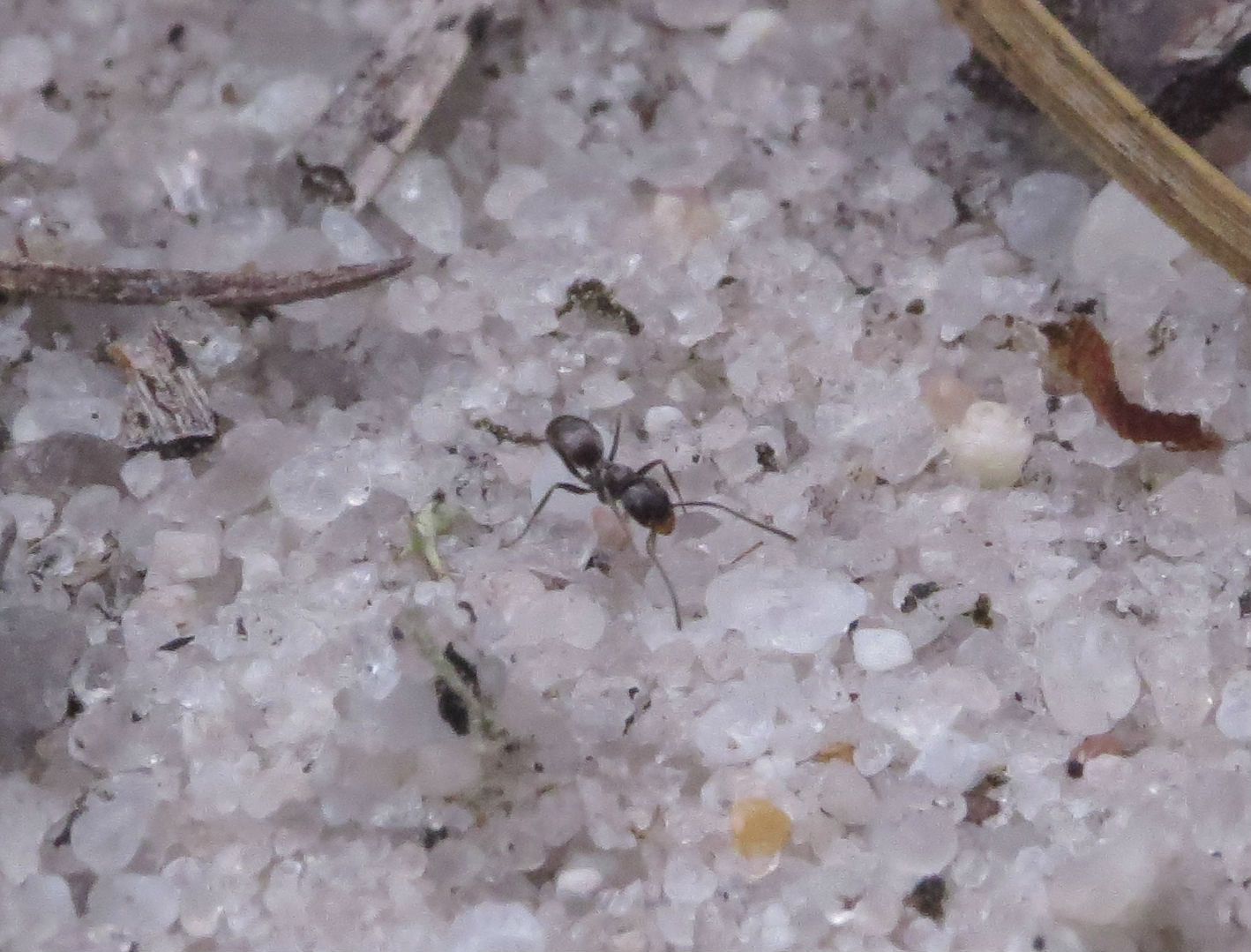
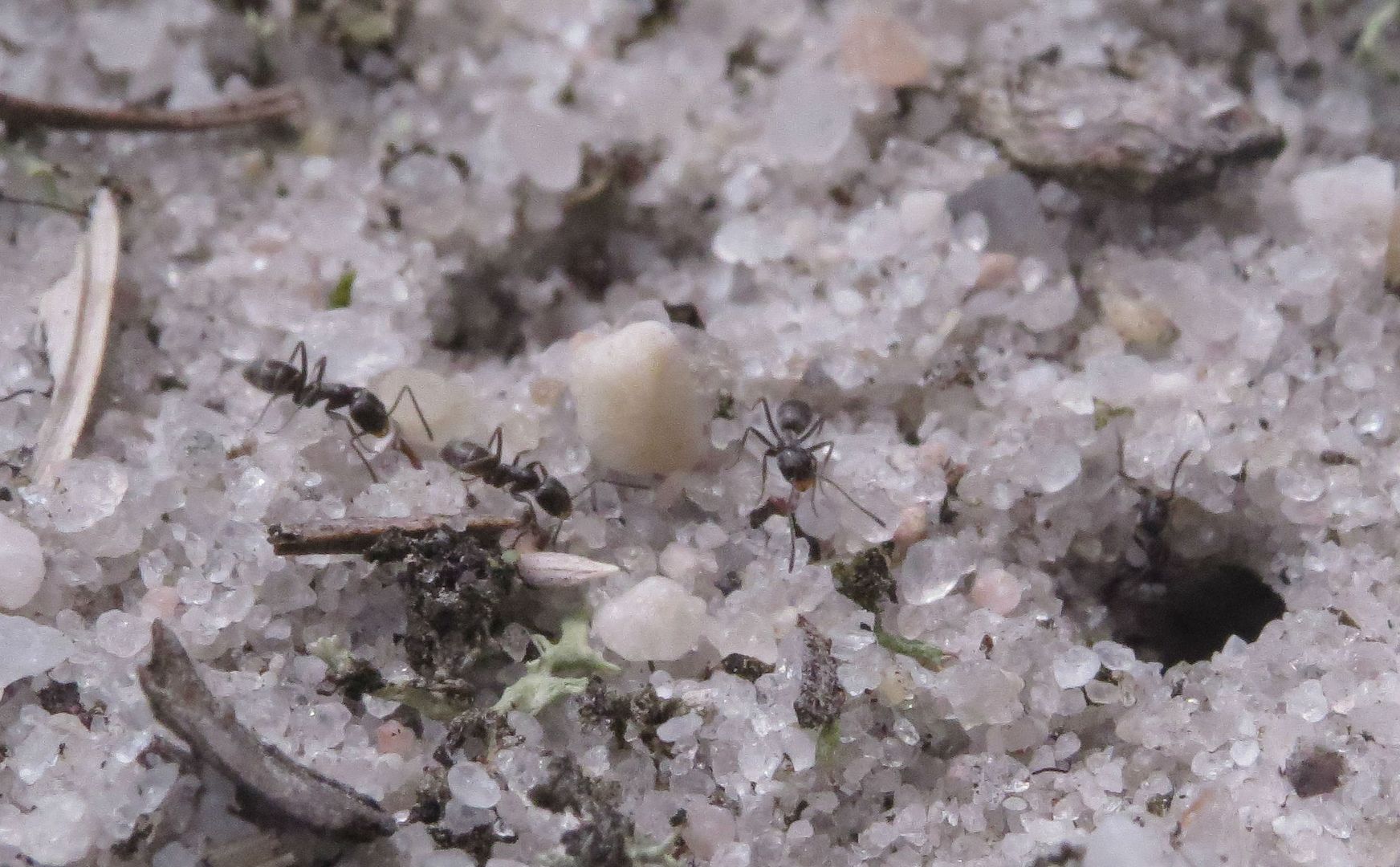
Slightly less of a highlight but still interesting was this patch of bright white sand where colonies of Dorymyrmex were located.
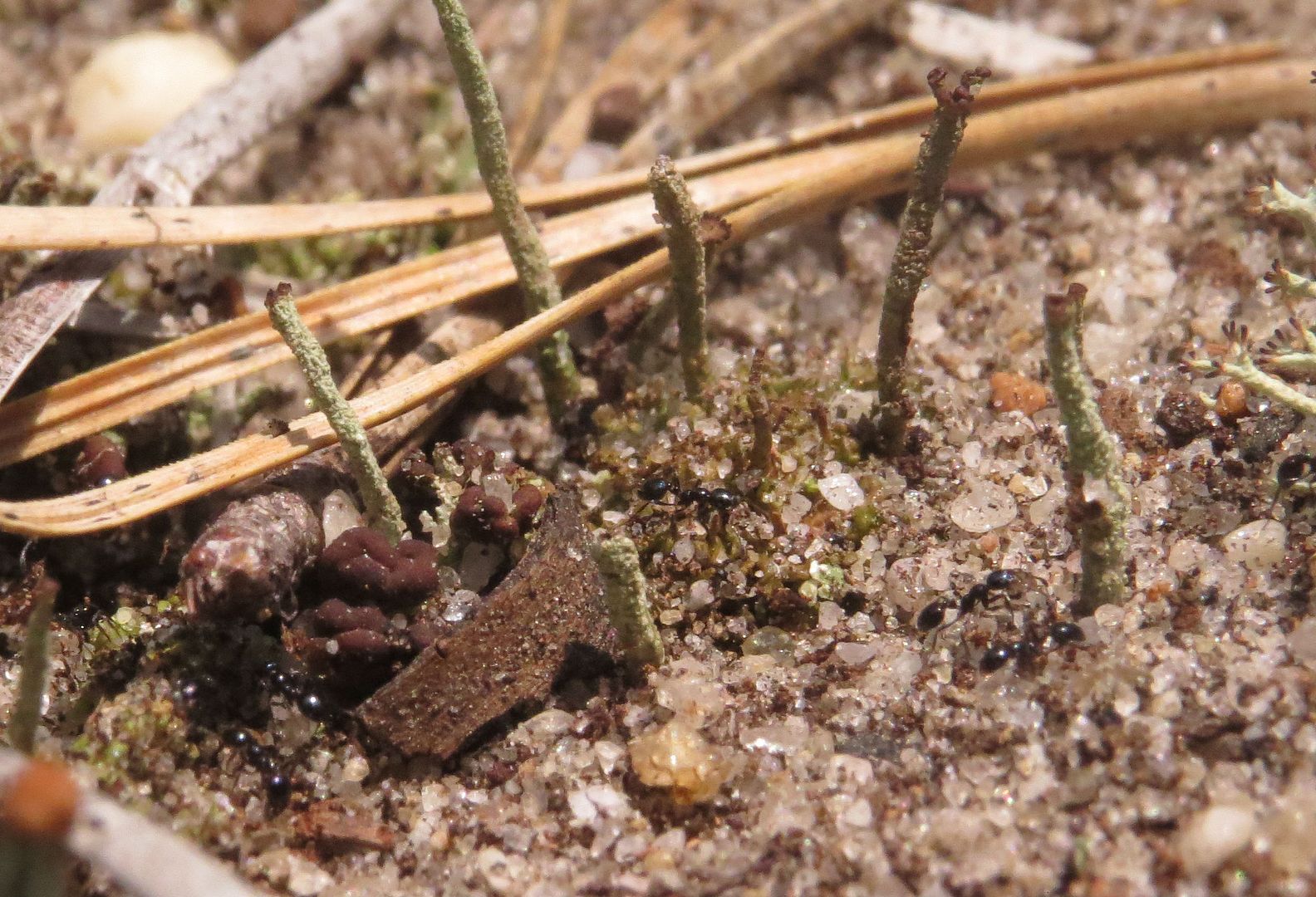
This sand patch is also where a dried out sort of sphagnum moss was growing which we tried not to disturb. There were some large colonies of Monomorium there too.

Just up the trail we found a Pine Snake.
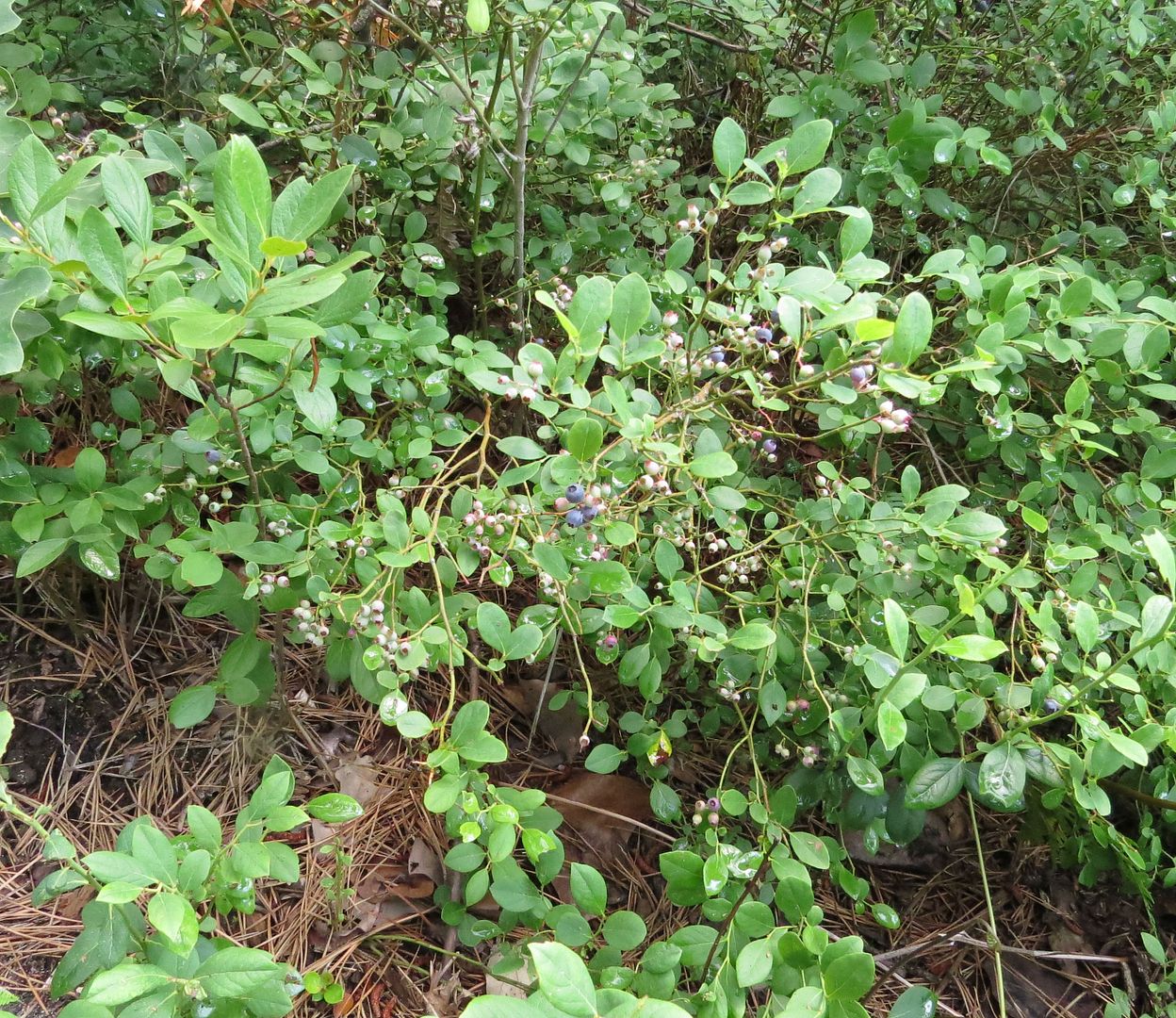
I liked our first location a lot because Wild Blueberries were coming into season. I'd never realized how much better Low Bush Blueberry tastes compared to High Bush because the plants grow in full shade the berries are at a more reasonable temperature. High Bush blueberry is more of a forest edge, full sun plant, thus the berries have a sharp taste to them unless chilled.
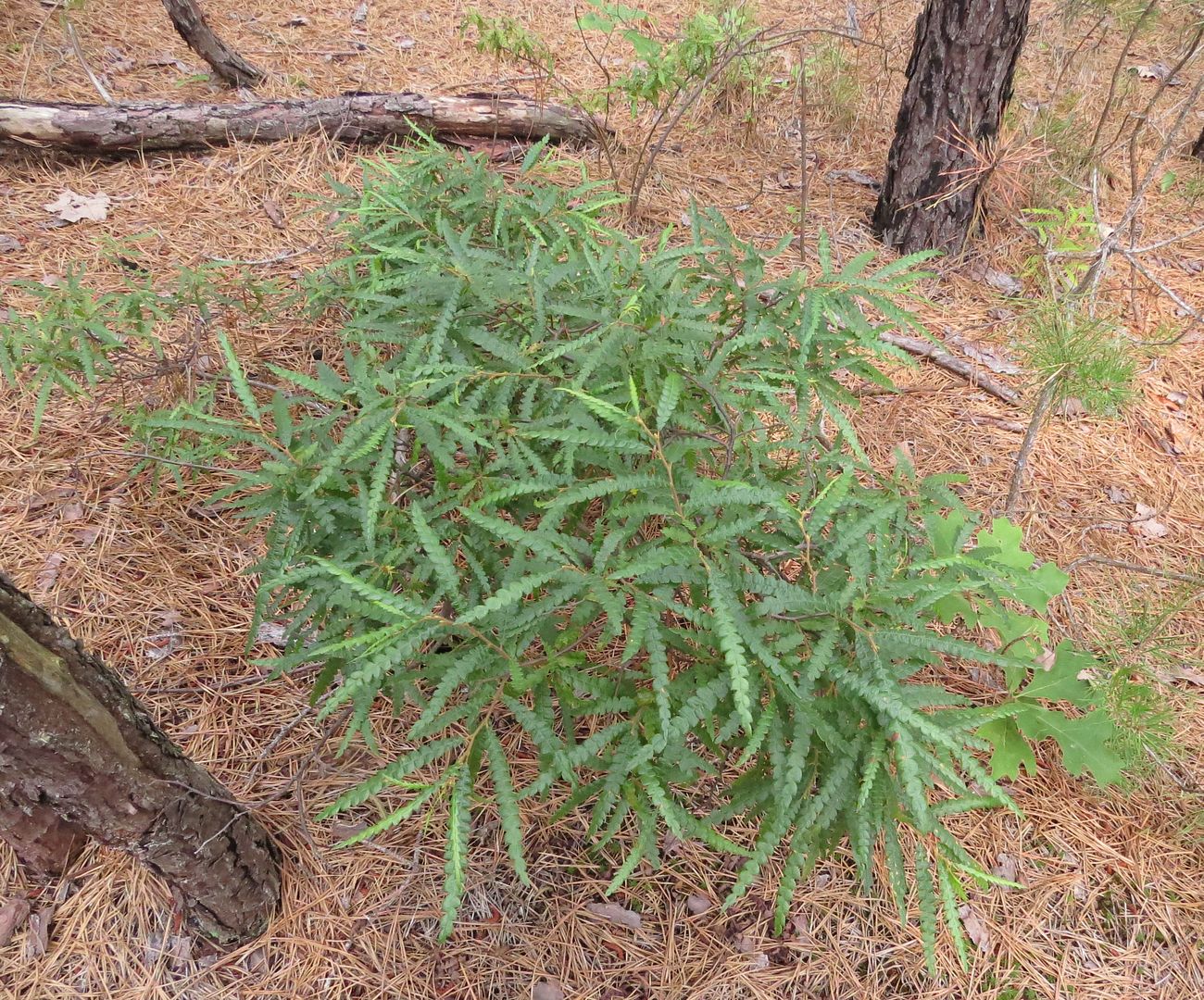
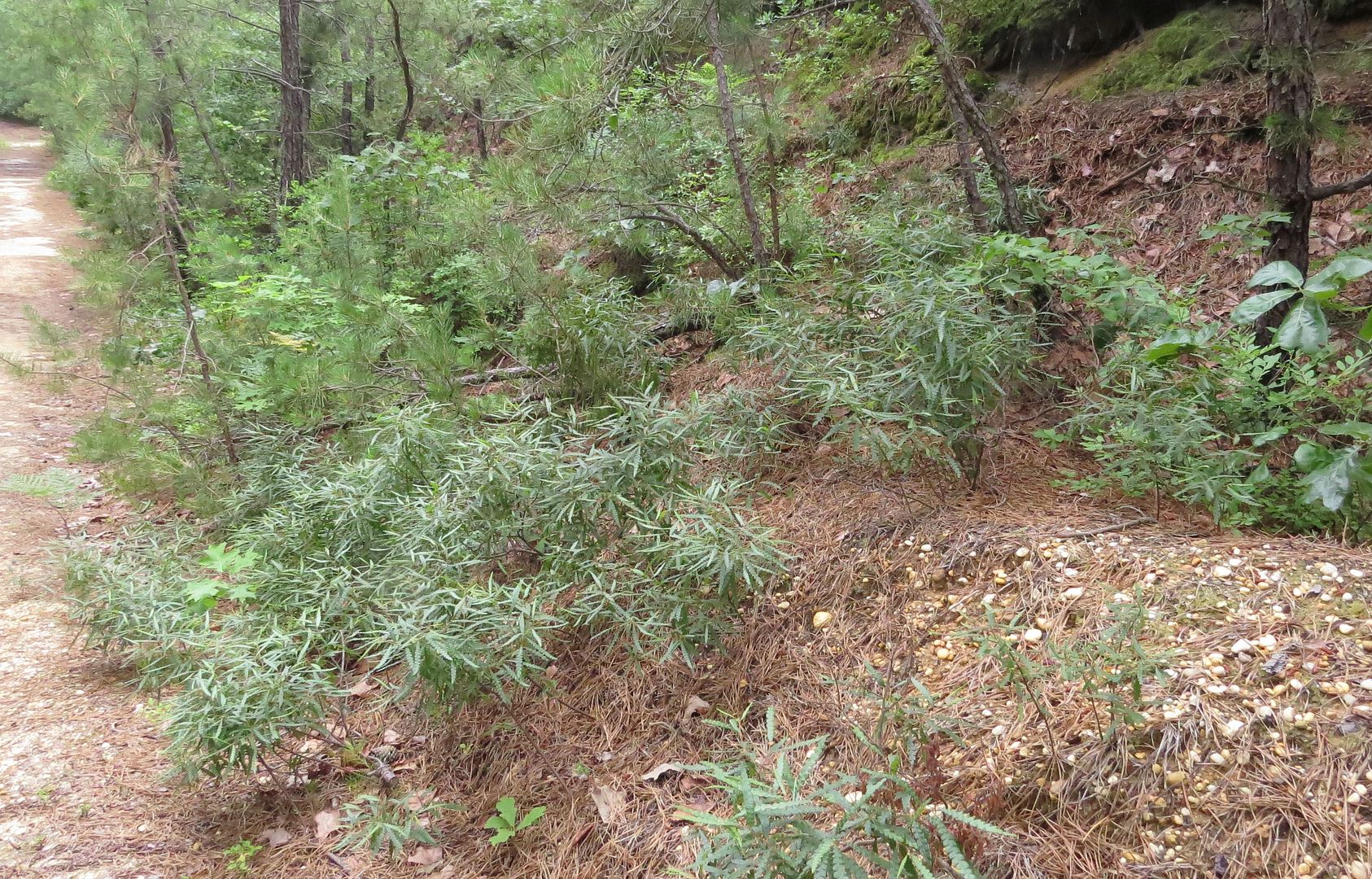
Sweet Fern was also growing all over the place along with droves of other types of ferns. This one in particular is adored by gardeners because the leaves have a pleasing smell to them.
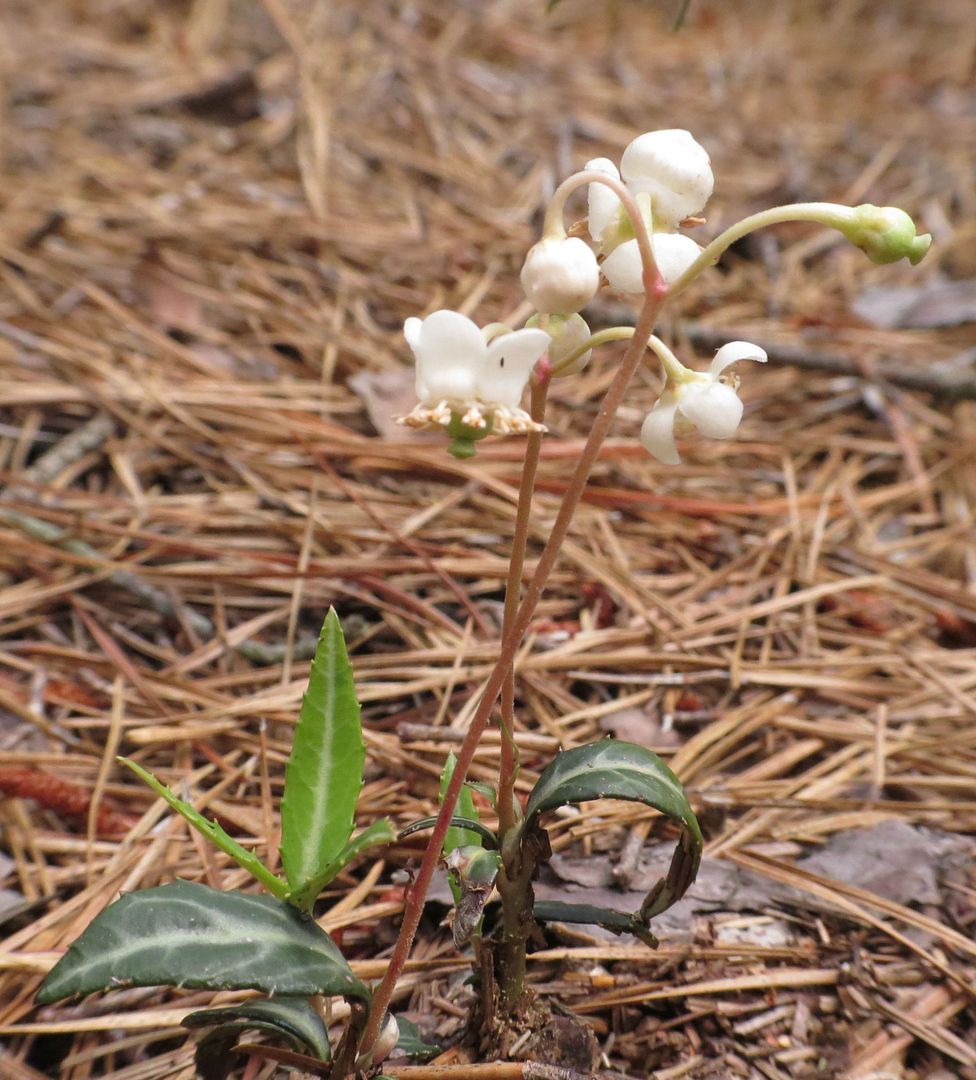
I was calling this Wintergreen all day but now that I google it I'm not convinced. Anyone know what this is?
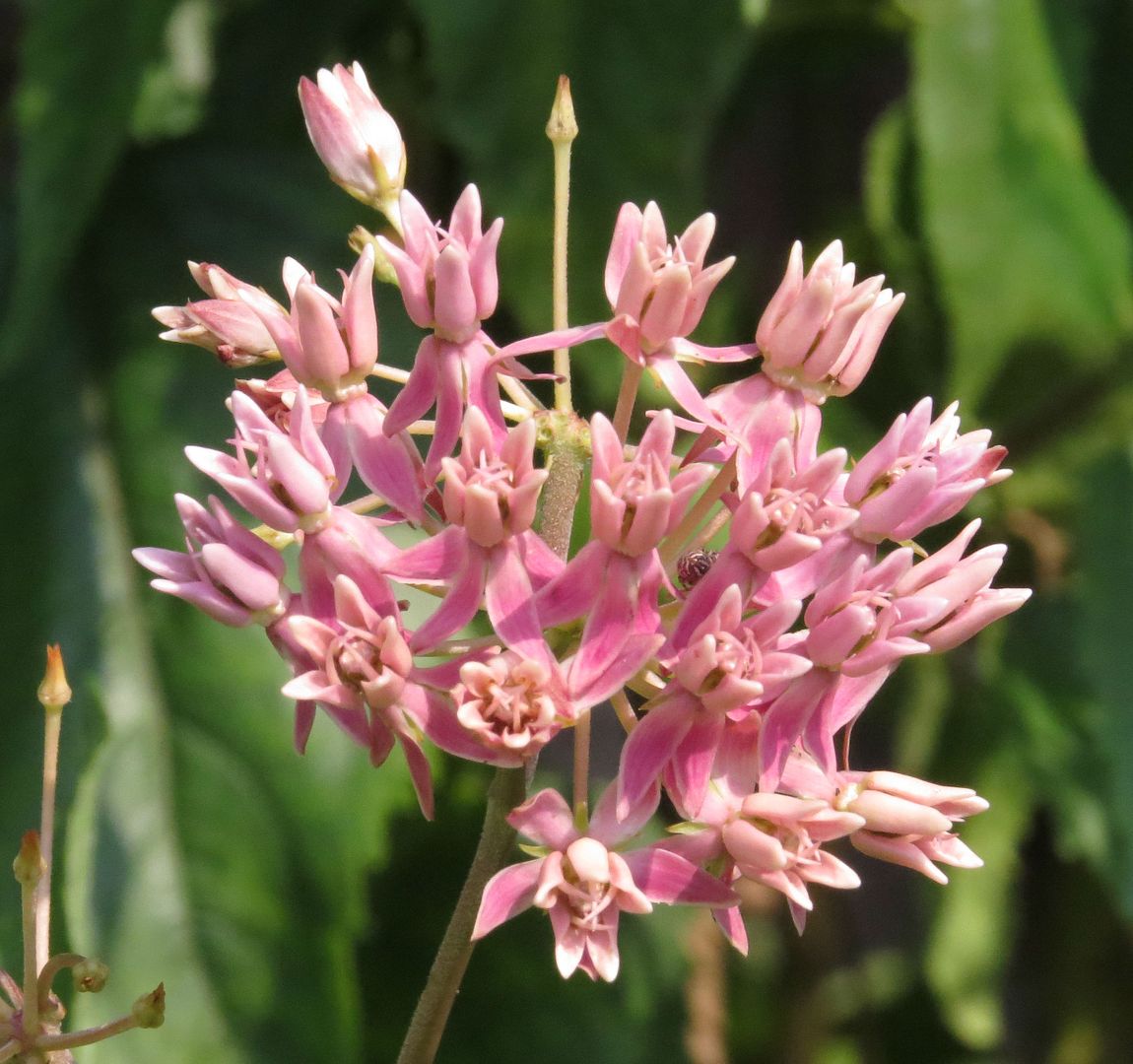
I also got to see Red Milkweed, Asclepias rubra, which is one of the rare species not yet in mainstream cultivation. It seems to be a bog plant requiring constantly damp muddy soil to grow.
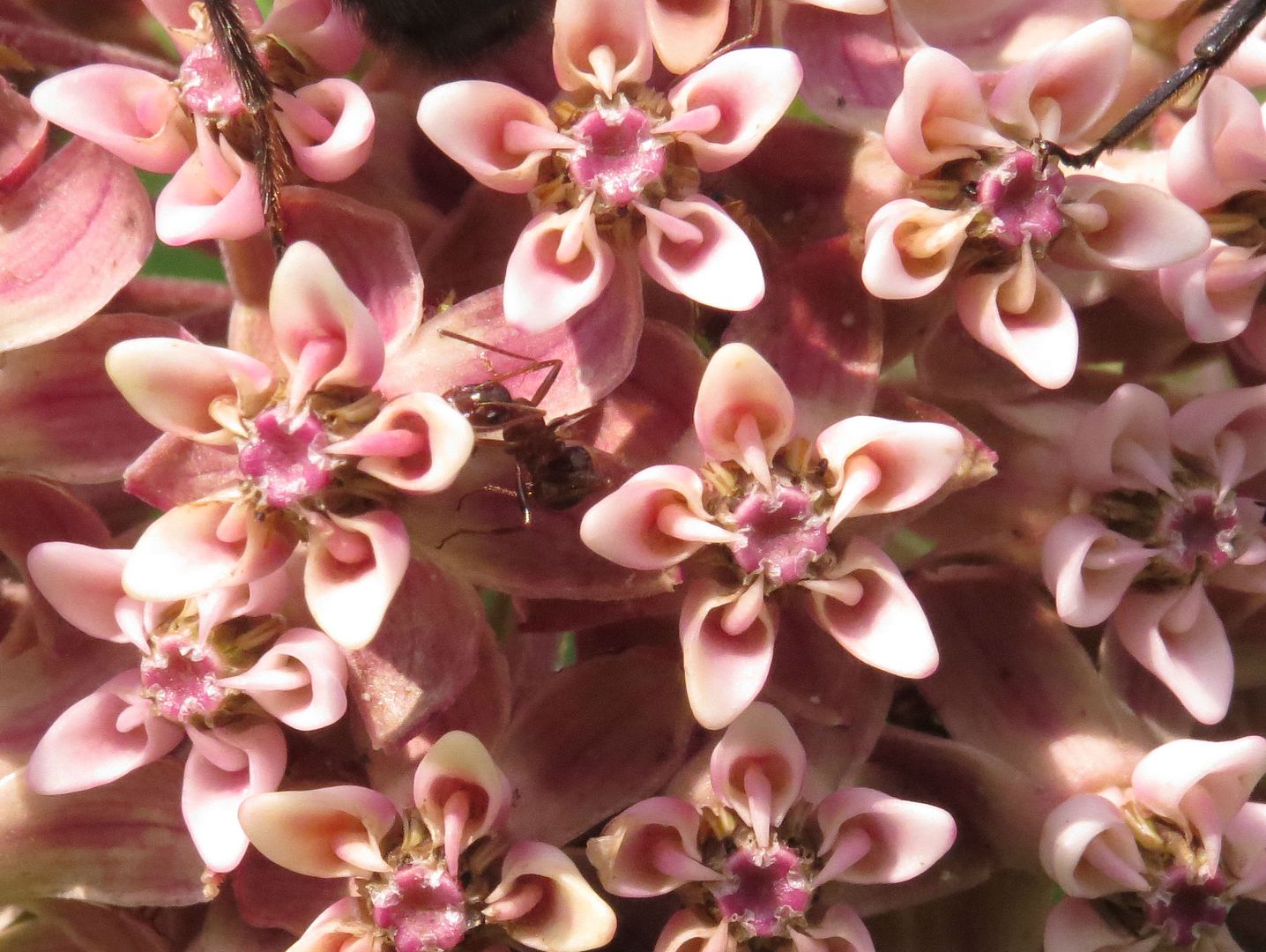
Ants actually really like Milkweed so it's one of the plants I pay attention to. Formica especially seem to like stealing the nectar from Common Milkweed, Asclepias syriaca.

This is the dark form of Formica pallidefulva I believe.

At our second location, Turkey Swamp Park, I'm happy to say they seem to finally be doing something with that wide open field. Namely just not mowing patches of it here and there so the milkweed gets to grow.
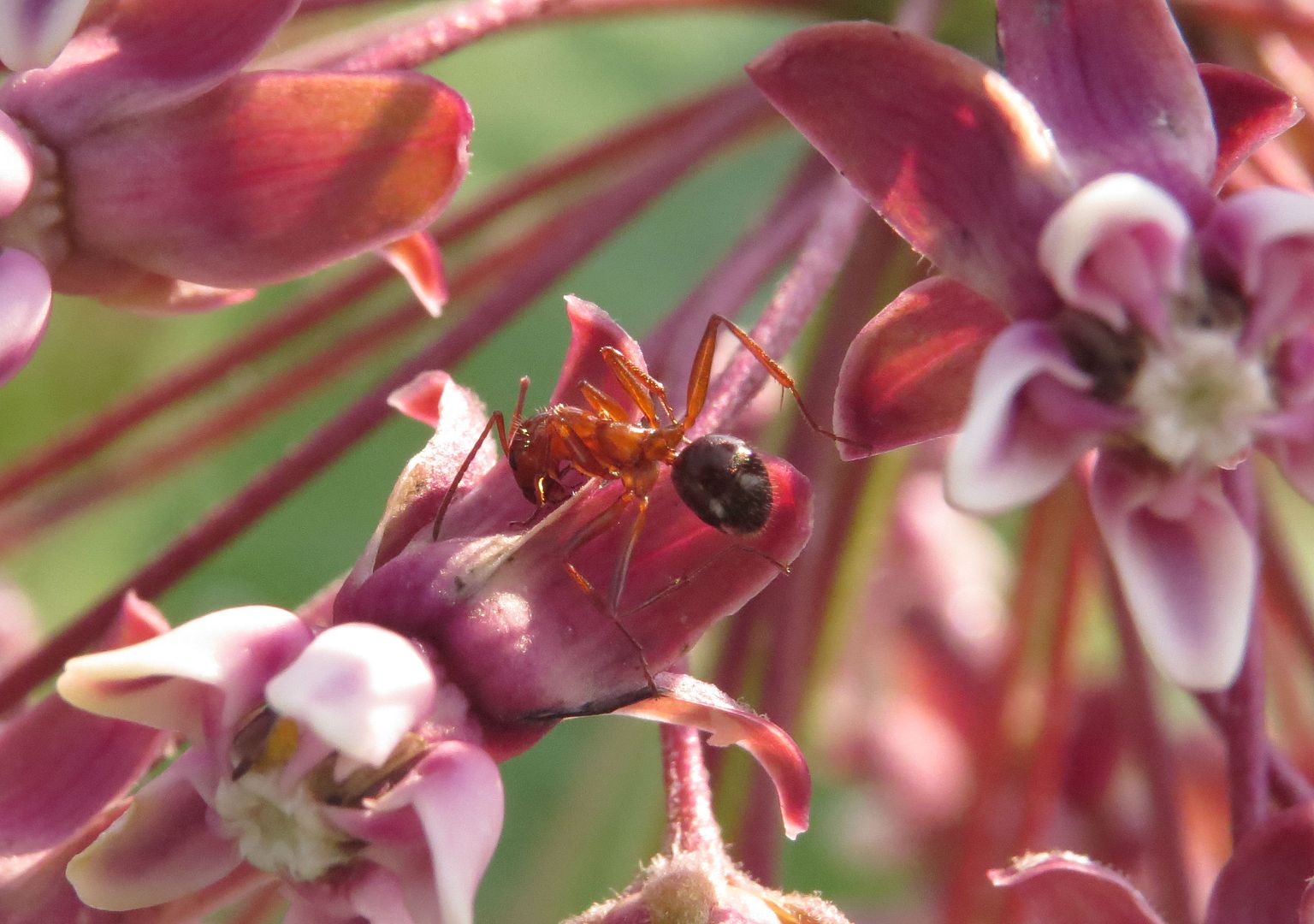
It's here where we found yet another species of Formica all over the flowers. And I think this is the same as the next one below... this milkweed patch was right between the F. exsectoides super colonies, and a population of some other Formica who's majors rivaled the size of C. chromaiodes majors.



What's neat is they actually had foraging trenches dug out that occasionally dipped down underground. And we found multiple trails like this coming from the forest to some plants that were growing along a lake/stream where they were tending to droves of aphids like an assembly line.
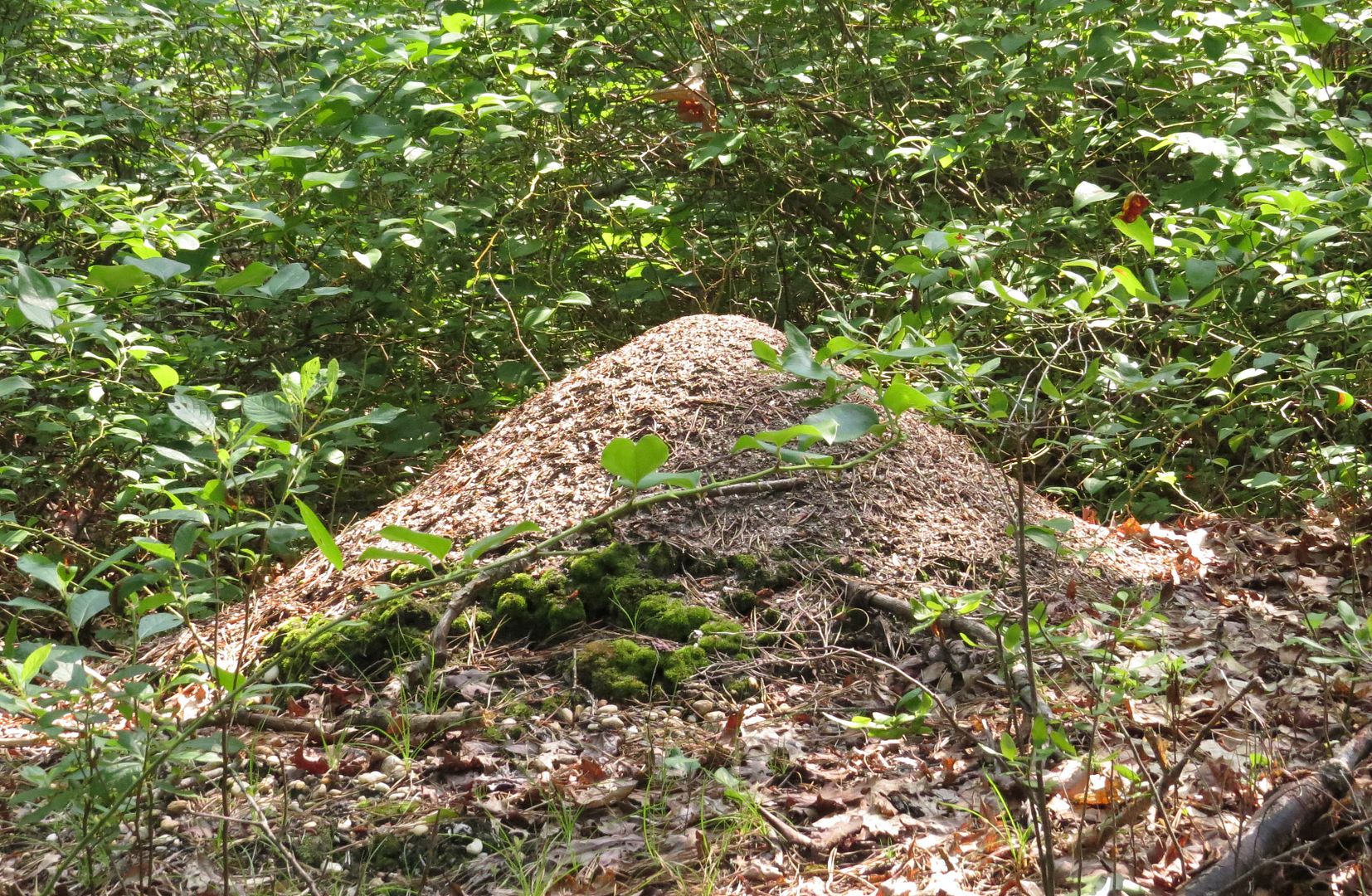
We found quite a few more Formica exsectoides mounds this years. They were far more active, like 10 times more aggressive, and very pissed off that I inserted an endoscope into their mound. The video didn't really come out though... kind of like a horrifying colonoscopy video really.
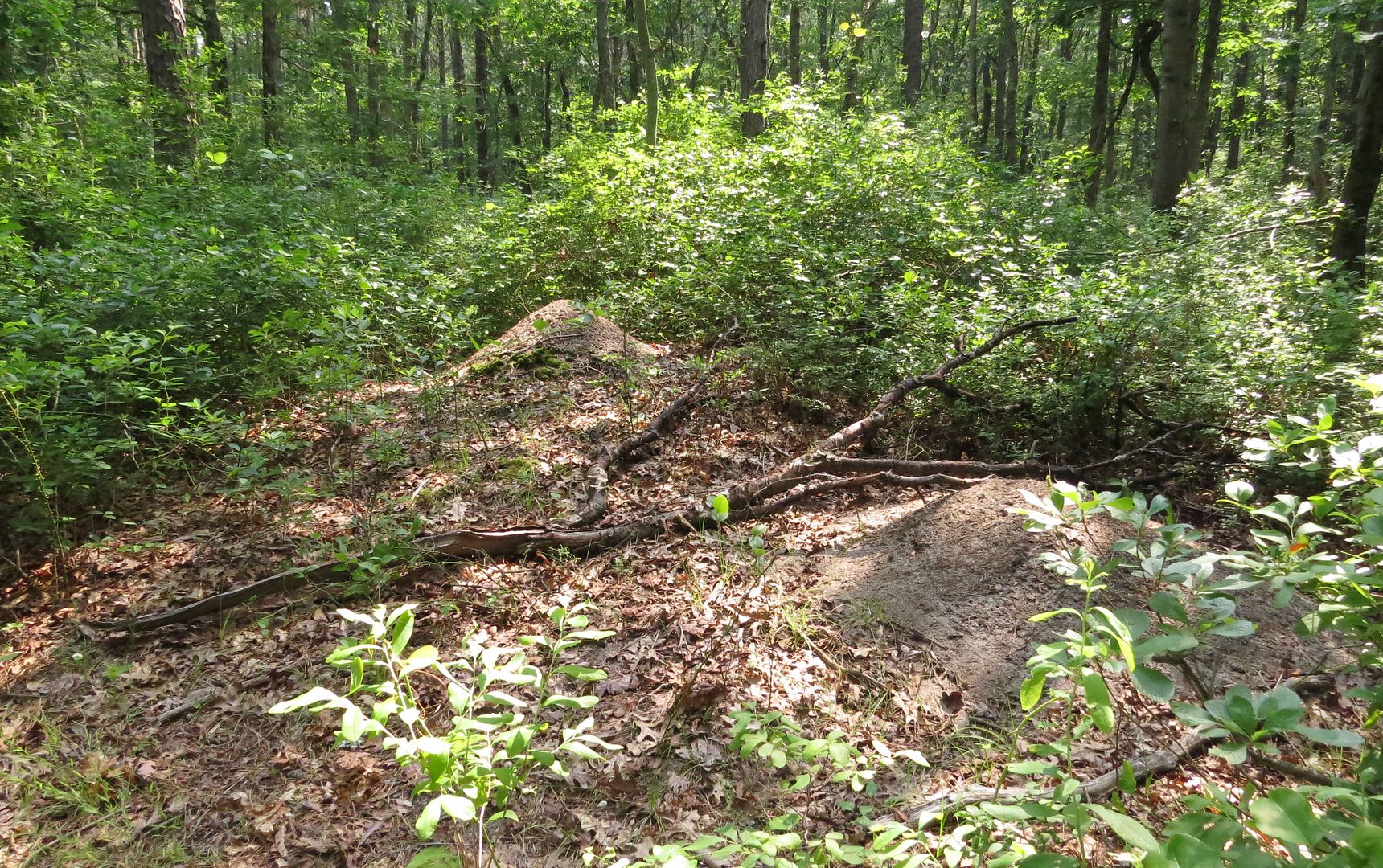
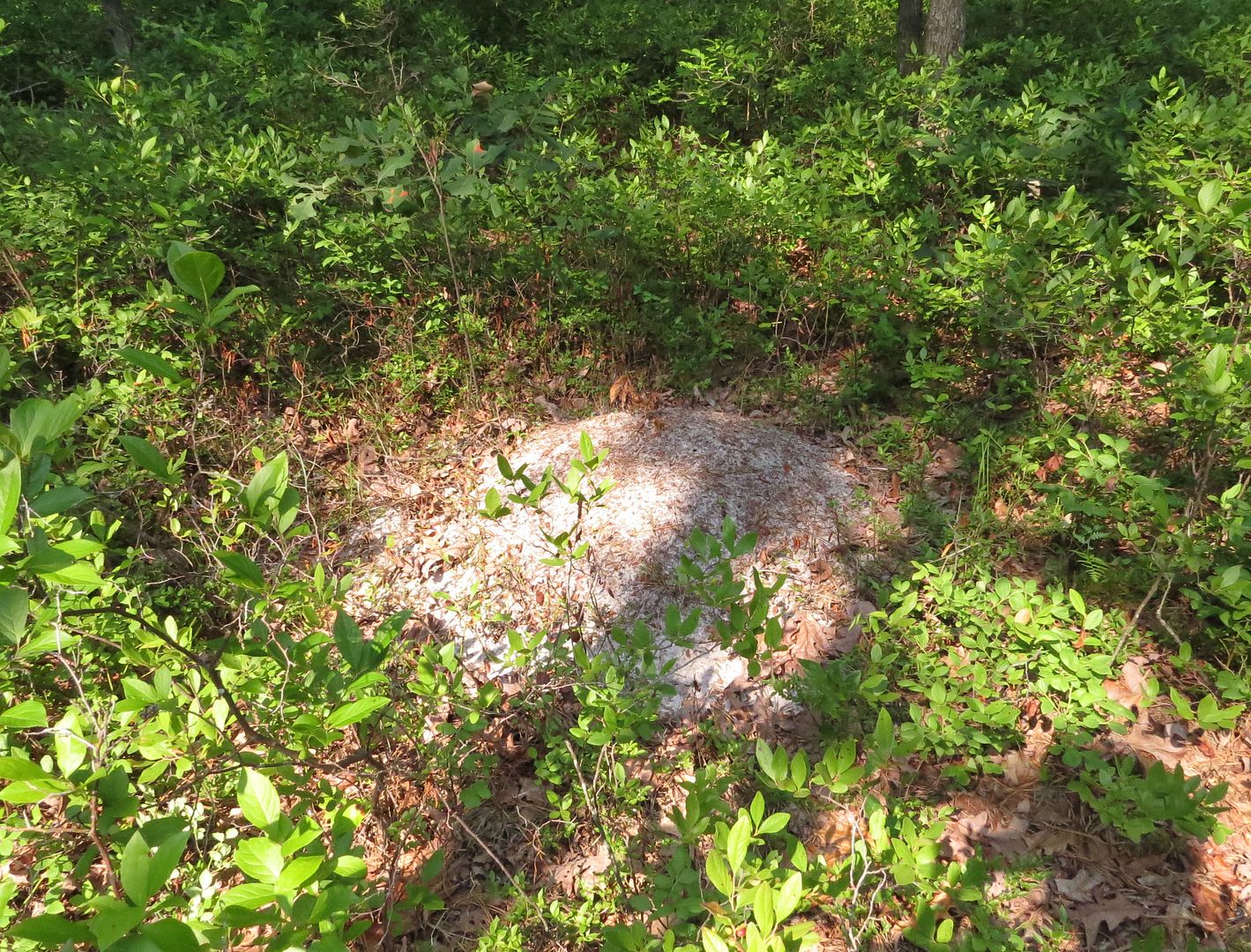
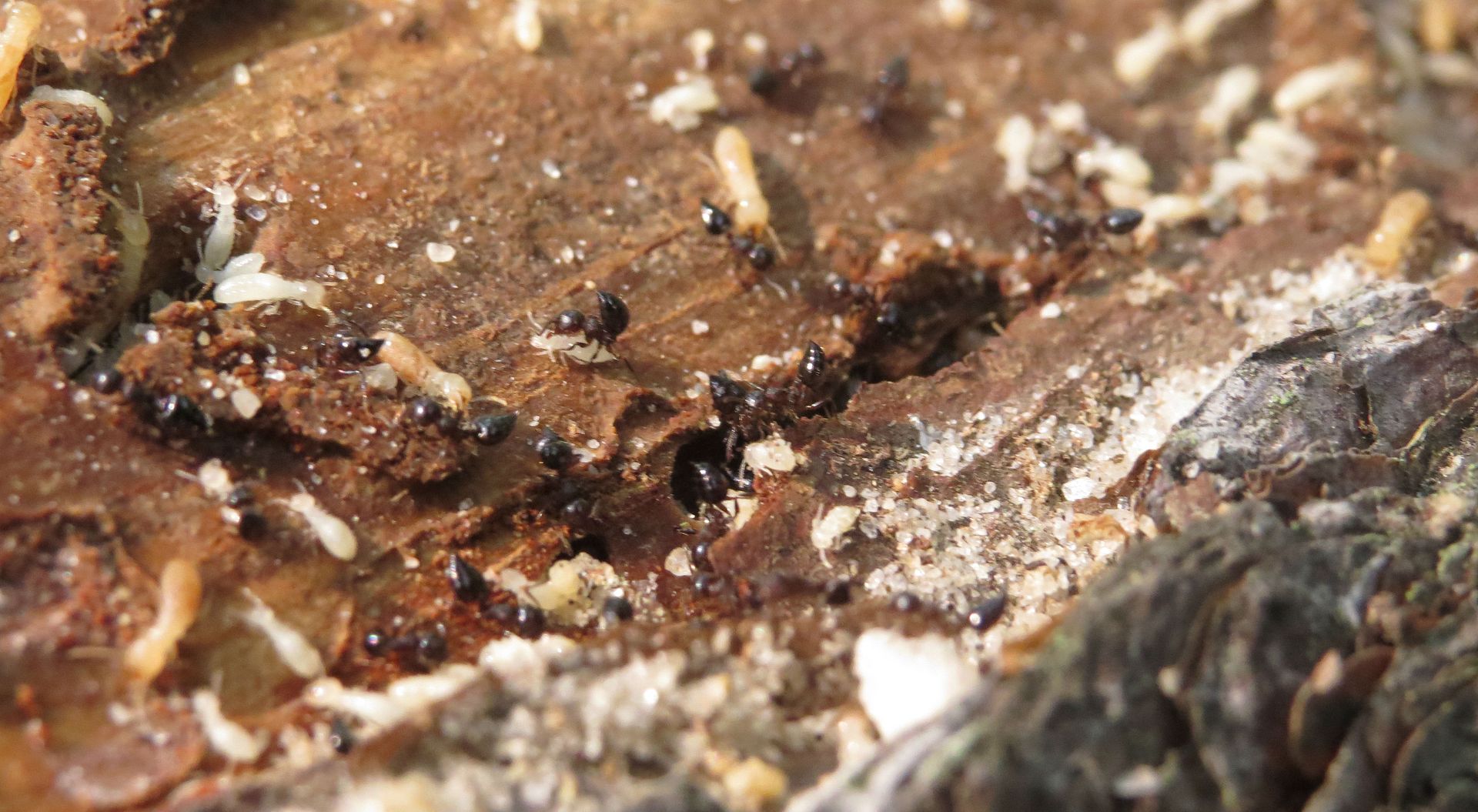
We also found Termites nesting just beneath the bark of a tree, and just below that a Crematogaster colony had a brood chamber which we broke into unexpectidly thus starting a small war.

This is a Dog Bane Beetle. I like that their feet are blue.

Frogs!

Frogs for days!

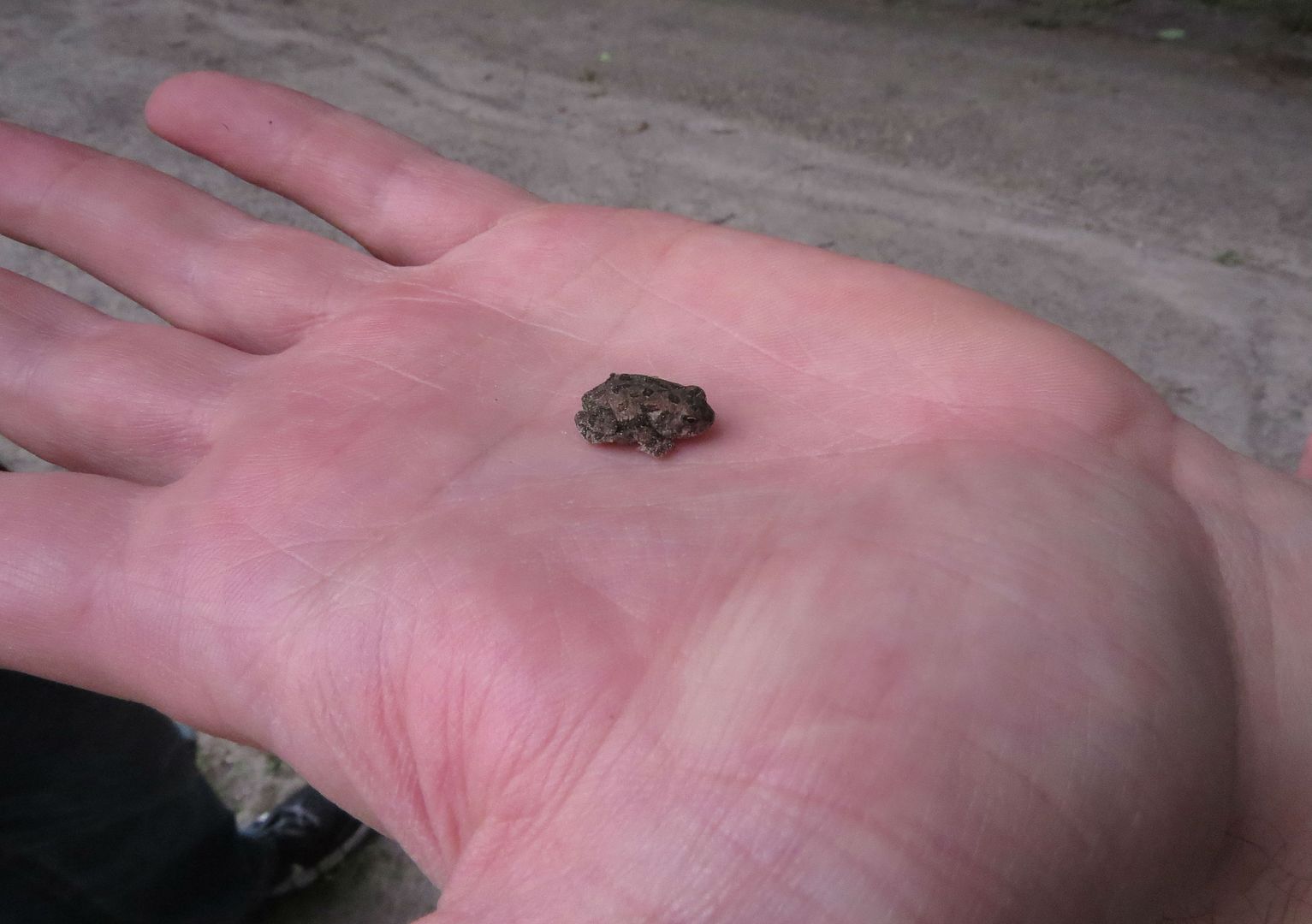
High Five?

Last of all found this to be an ideal time to go looking for Indian Pipe. This is a rare wildflower that you will only ever see growing in the wild. It's a parasite that requires a beneficial fungi to be prescient in the soil to exchange nutrients from an established tree, typically a 60' tall Oak.

Oddly enough though we kept finding it trying to grow beneath logs. Not just on one occasion but on several! Suggesting that the seeds somehow find their way under dead wood structures, or maybe this is where the beneficial fungus most often occurs?
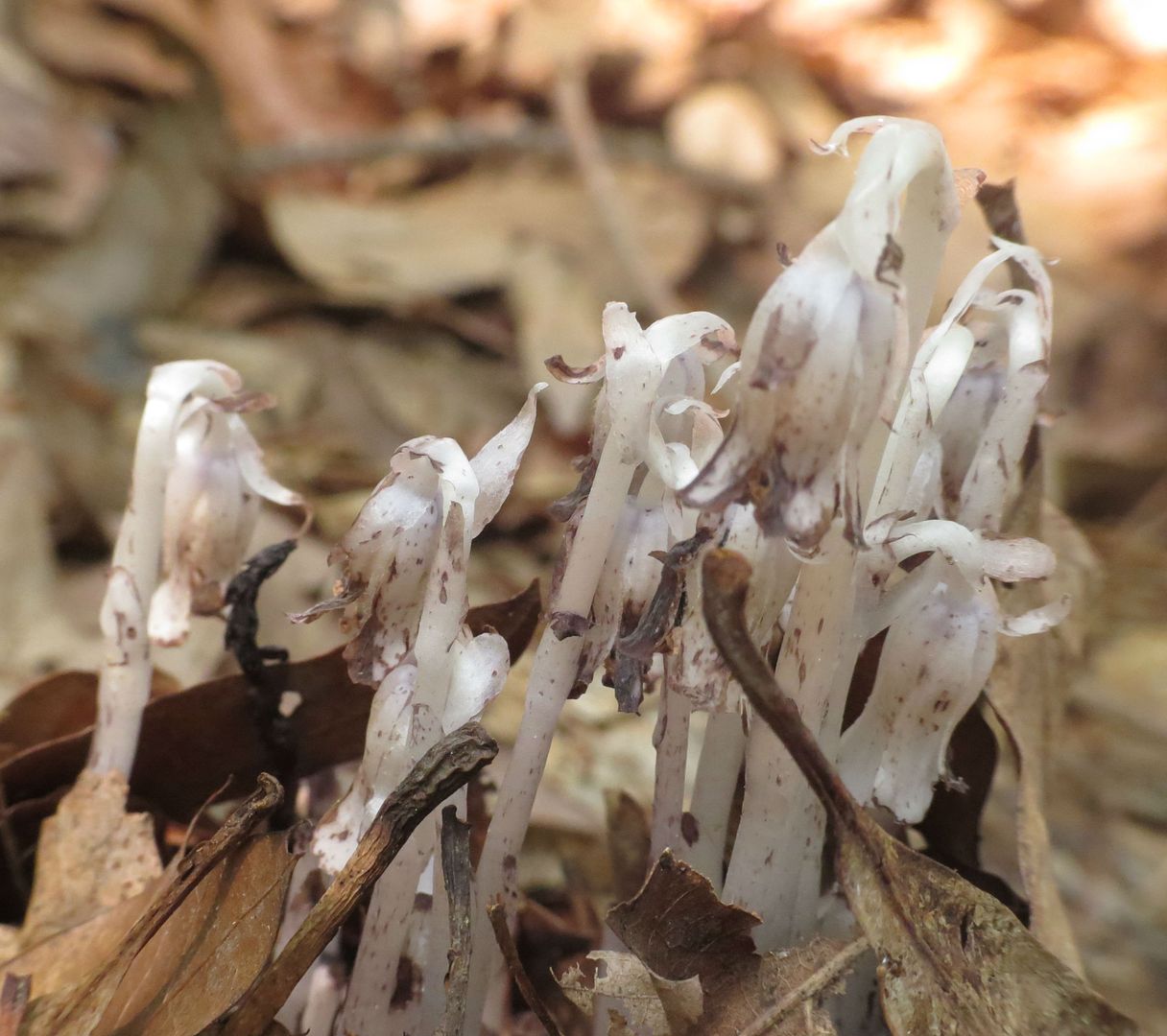
Basically because it's a parasitic plant, it doesn't produce any chlorophyll, thus it's not green but rather a frail white.
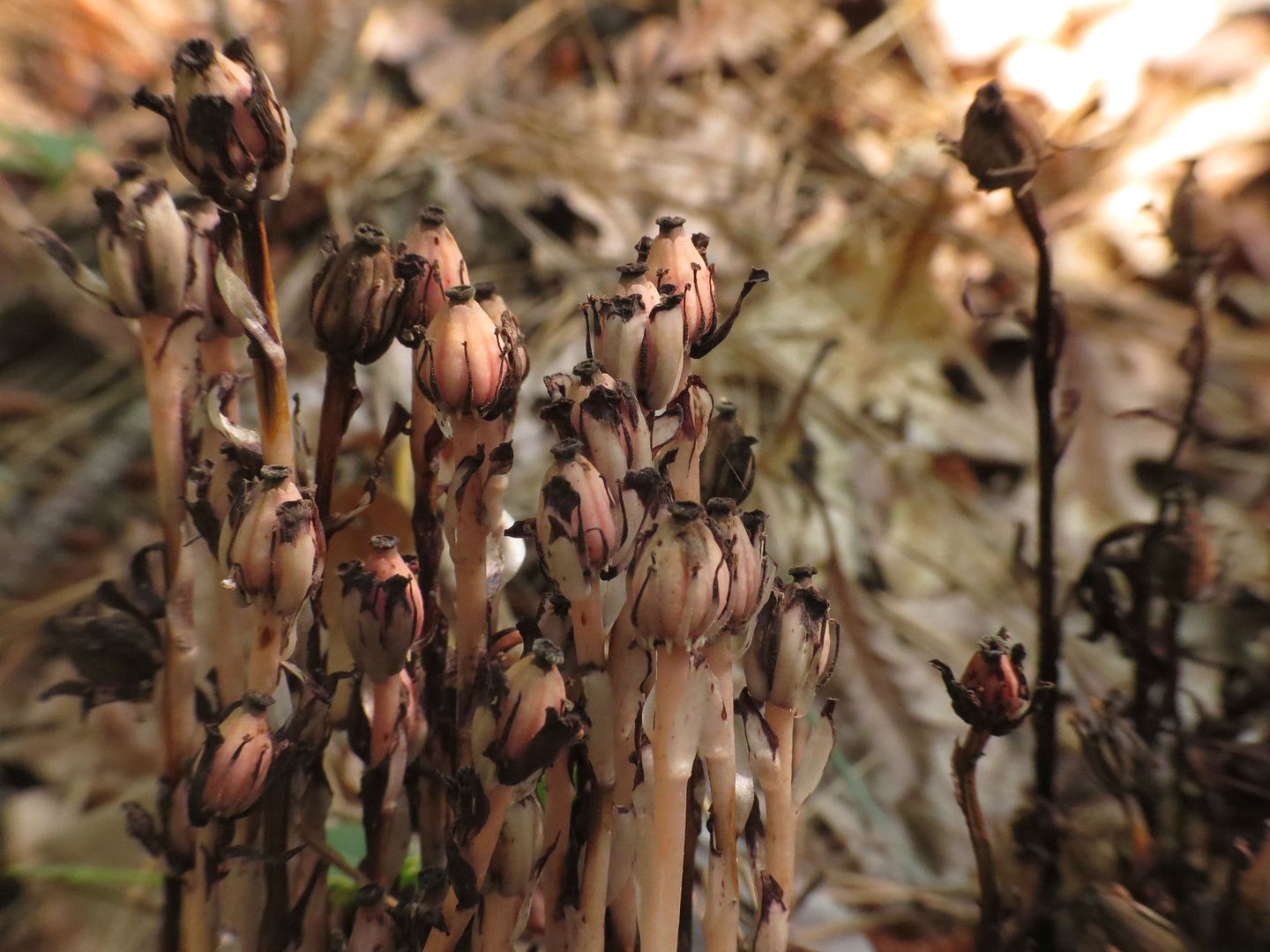
After flowering, the plant almost sorts of melts, and shrivels up into twig-like stems.

Fallen leaves in a spot that floods on occasion, apparently dyed a silver tone from the algae or something growing on them.
Subscribe to:
Posts (Atom)



